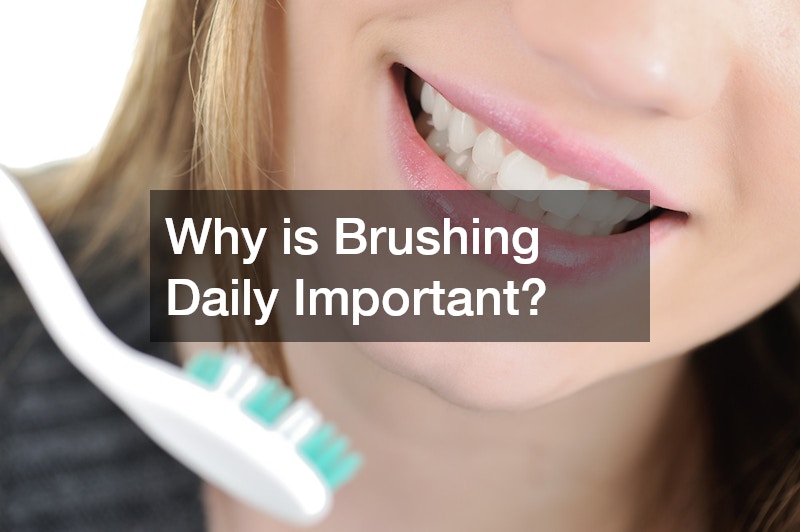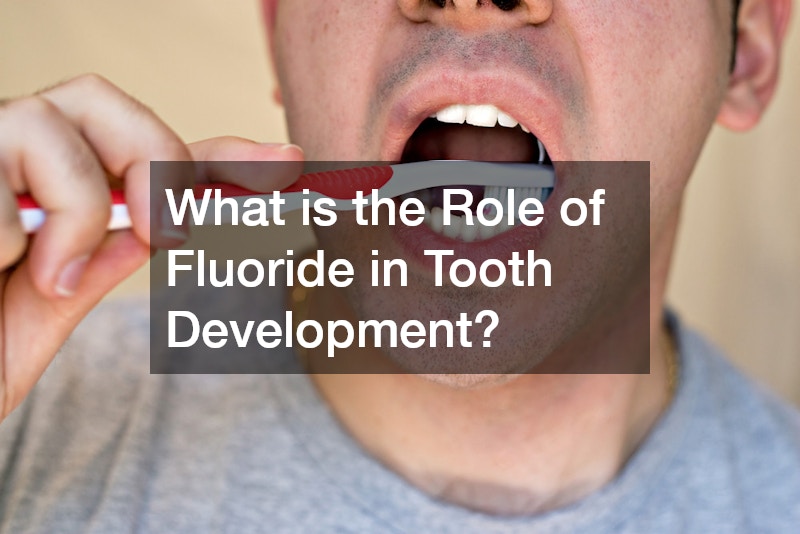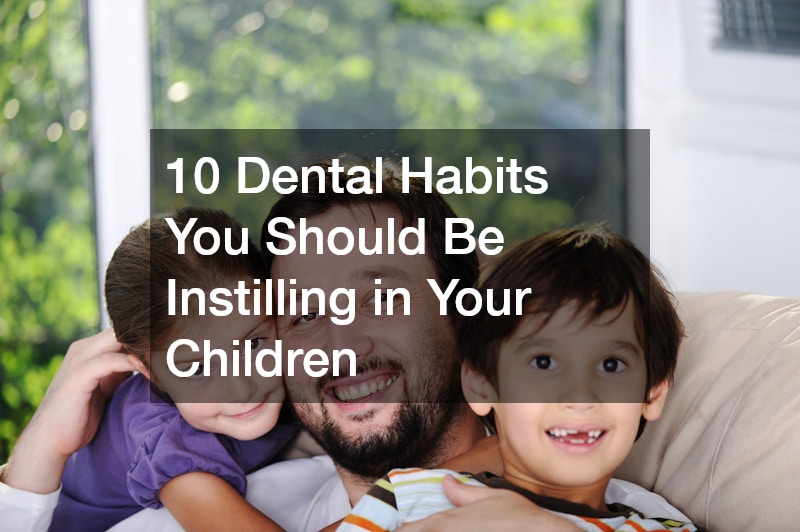As parents, one of the most important responsibilities is ensuring the overall health and wellbeing of our children. This includes taking care of their dental health, which is often overlooked in early childhood. A solid foundation of good dental habits can lead to a lifetime of healthy teeth and gums. Instilling healthy oral hygiene habits in children at an early age is crucial for preventing future dental issues and fostering a positive attitude toward dental care. From regular brushing and flossing to making visits to the dentist, this article will guide you through key dental habits that you should be introducing to your children. Whether you’re looking for affordable dentist options or a top-tier local pediatric dentist office, understanding the basics of pediatric dentistry will help ensure your child maintains good oral health throughout their life.
Why is Brushing Daily Important?

Benefits of Regular Brushing
One of the most important habits for children is brushing their teeth regularly. Brushing removes plaque, prevents cavities, and ensures that their teeth stay clean and healthy. According to dental professionals, daily brushing helps protect children from tooth decay and gum disease, which are common issues in young children. Brushing also prevents bad breath and improves the appearance of their teeth. Starting this habit early teaches kids the importance of taking care of their teeth, and it helps them develop the foundation for healthy oral hygiene that will last a lifetime. For optimal results, it is recommended that children brush twice a day.
Best Times to Brush Teeth
The ideal times to brush a child’s teeth are in the morning and before bed. Brushing in the morning removes any bacteria that accumulate overnight and ensures the mouth stays fresh. Brushing before bed is equally important, as it removes the day’s food particles and prevents plaque buildup during sleep. Teaching your child to brush at these specific times establishes consistency, making it a part of their daily routine. Parents should also supervise their children’s brushing routine until they are old enough to do it independently, usually around the age of seven or eight. Consistent brushing helps your child maintain a beautiful smile and contributes to good oral health.
Choosing the Right Toothbrush for Children
When selecting a toothbrush for your child, it’s essential to choose one that is appropriate for their age and dental development. A soft-bristled toothbrush with a small head is ideal for young children, as it ensures a gentle cleaning experience and easy access to all parts of the mouth. It’s also important to consider the size and design of the handle. A toothbrush with an ergonomic handle will make it easier for your child to grip and use it properly. For toddlers, there are also fun, character-themed brushes available that can make brushing more exciting and enjoyable. Don’t forget to replace the toothbrush every three to four months, or sooner if the bristles are frayed.
When Should Children Start Flossing?
Introducing Flossing to Your Child
Flossing is just as important as brushing for maintaining healthy teeth. Children should begin flossing once they have two teeth that touch each other, usually around the age of three. Teaching your child how to floss properly early on can prevent plaque buildup between the teeth and help them avoid cavities in places that a toothbrush can’t reach. Many parents find it easier to start flossing by using dental floss picks, which are simpler to handle for small hands. You should also consider consulting with a local pediatric dentist office about the best techniques for your child’s age.
Proper Flossing Techniques for Kids
When you introduce flossing to your child, make sure they understand the proper technique to avoid hurting their gums or damaging their teeth. The floss should be gently moved between the teeth in a sawing motion, and the child should not force the floss down into the gums. Gently curve the floss around each tooth in a C-shape and slide it up and down to clean between the teeth. Proper flossing techniques will ensure your child’s teeth are thoroughly cleaned and help prevent plaque buildup. This habit, combined with brushing, is an essential part of pediatric dentistry.
Types of Floss for Different Needs
There are several types of floss available, including waxed, unwaxed, and flavored options. Waxed floss is often recommended for children, as it is easier to slide between tight teeth without snapping. Flavored floss can make the process more enjoyable for your child, encouraging them to floss more often. There are also floss picks available for younger children who may struggle with traditional floss. As your child grows older and becomes more comfortable with flossing, they can transition to regular dental floss. Your family dentist may recommend specific products that suit your child’s needs.
How Does Diet Affect Dental Health?

Foods That Promote Healthy Teeth
Diet plays a significant role in your child’s dental health. A healthy, balanced diet provides essential nutrients that support strong teeth and gums. Foods rich in calcium, such as milk, cheese, and yogurt, promote healthy tooth enamel. Vegetables like carrots and celery can help clean teeth naturally and stimulate saliva production, which helps neutralize acids in the mouth. Additionally, foods high in vitamin C, such as oranges and strawberries, are vital for gum health. Ensuring your child eats a variety of nutrient-rich foods can reduce the risk of tooth decay and other dental issues and prevent the need for dental services.
The Risks of Sugary Snacks
While some foods benefit dental health, others can harm it. Sugary snacks and drinks are a leading cause of tooth decay in children. Bacteria in the mouth feed on sugar, producing acid that erodes tooth enamel and leads to cavities. Sugary snacks, such as candies, cookies, and sodas, should be consumed in moderation. It’s essential to educate your child about the risks of consuming too much sugar and encourage healthier alternatives like fruit and water. Limiting sugary foods helps ensure that your child’s teeth remain strong and free of cavities.
Ensuring a Balanced Nutritional Intake
A balanced diet is key to overall health, including dental health. Children should consume a variety of fruits, vegetables, proteins, and whole grains to ensure they get all the necessary vitamins and minerals for healthy teeth. It’s also important to establish healthy eating habits early on. Encourage your child to eat meals at regular intervals and limit snacks between meals. Drinking water throughout the day, especially after meals, helps rinse the mouth and remove food particles, further protecting their teeth.
How Often Should Children Visit a Dentist?
Importance of Regular Dental Checkups
Regular visits to the dentist are critical for maintaining healthy teeth and gums. According to pediatric dentistry guidelines, children should see a dentist by their first birthday, and from then on, they should visit every six months for routine checkups. These visits help detect potential dental problems early, such as cavities, misaligned teeth, or gum disease, and they allow the dentist to intervene before problems become more serious. Regular dental cleanings ensure that plaque and tartar are removed, reducing the risk of cavities and gum issues. For more specialized care, you may need to find an affordable dentist or a dental surgeon for advanced treatments such as a dental bridge or other procedures.
Choosing a Pediatric Dentist
When selecting a dentist for your child, it’s essential to choose one who specializes in pediatric care. A pediatric dentist has the expertise to treat children’s unique dental needs, from teething to adolescent dental concerns. It’s important to find a local pediatric dentist office that makes your child feel comfortable and safe. Look for a dentist who is experienced with the specific age group of your child and offers a welcoming atmosphere. The best pediatric dentists will create a positive experience that sets the tone for a lifetime of good dental care.
Preparing Your Child for a Dentist Visit
Taking your child to the dentist for the first time can be an anxiety-inducing experience. To prepare your child, talk about the visit beforehand in a positive and reassuring way. Explain that the dentist will help keep their teeth healthy, and it’s nothing to be afraid of. You can even read books or watch videos about going to the dentist to familiarize them with the process. Additionally, make sure to schedule their first visit at a time when they are not too tired or hungry. A calm and positive approach will help ease their nerves and set the stage for a positive dental experience.
How to Encourage Healthy Dental Habits at Home?

Role Modeling Good Behavior
Children learn by example, so it’s important to model good dental habits yourself. Show your child how to brush and floss their teeth properly, and make dental care a part of your family routine. When children see their parents taking care of their own teeth, they are more likely to adopt these habits themselves. By setting a good example, you are not only helping your child develop healthy habits but also reinforcing the importance of oral hygiene for the entire family.
Making Brushing Fun and Engaging
Brushing can sometimes feel like a chore to children, but there are ways to make it more fun. Let your child choose their toothbrush, and consider playing their favorite song while they brush to make it a more enjoyable experience. There are also many apps and games available that turn brushing into an interactive activity. You can also use stickers or rewards to motivate your child to brush regularly. The goal is to make dental care an enjoyable part of their daily routine.
Using Dental Education Tools
There are many dental education tools available that can help teach your child about the importance of oral hygiene. Interactive books, games, and videos can make learning about dental care fun and engaging. You can also use charts to track your child’s brushing and flossing habits and reward them for consistent effort. Teaching your child about the consequences of poor dental habits and the benefits of good ones can empower them to take responsibility for their oral health.
What to Do in Case of a Dental Emergency?
Identifying Dental Emergencies
Dental emergencies can happen unexpectedly, so it’s important to be prepared. Common dental emergencies include chipped teeth, knocked-out teeth, or severe tooth pain. Knowing how to handle these situations will ensure that your child receives prompt treatment. In the case of a knocked-out tooth, try to place it back in the socket if possible, or keep it moist in milk until you can reach the best pediatric dentists. For tooth pain, you can give your child pain relief and call the dentist immediately. Knowing when to act quickly can prevent further complications and ensure your child’s dental health is preserved.
Immediate Steps to Take
If your child experiences a dental emergency, stay calm and take immediate action. If a tooth is knocked out, rinse the mouth with water, apply pressure to stop any bleeding, and seek immediate dental care. If the tooth is chipped, save the broken piece, and contact a dentist for advice. For severe toothaches, rinsing the mouth with warm saltwater can alleviate discomfort temporarily, but a visit to the dentist is necessary for treatment. Always keep your family dentist’s contact information readily available in case of emergencies.
When to Consult a Dentist Quickly
If your child experiences any of the following, it is important to contact a local dentist right away: significant pain, a knocked-out tooth, a visible crack in the tooth, or signs of infection such as swelling or fever. Delaying treatment can lead to complications, so it’s better to seek dental care sooner rather than later.
What is the Role of Fluoride in Tooth Development?

Benefits of Fluoride for Children’s Teeth
Fluoride is a mineral that helps strengthen tooth enamel and protect against cavities. Fluoride can be found in toothpaste and drinking water, and it plays a vital role in preventing tooth decay in children. Regular exposure to fluoride helps make teeth more resistant to the acids produced by bacteria in the mouth. Many local dentists recommend fluoride treatments for children who are at a higher risk for cavities. Fluoride is a safe and effective way to promote strong, healthy teeth.
Sources of Fluoride for Children
Fluoride can be found in many sources, including fluoridated tap water, fluoride toothpaste, and professional fluoride treatments offered by dentists. It’s important to ensure that your child is receiving enough fluoride to protect their teeth, but you should also make sure they don’t swallow toothpaste, as excessive fluoride can lead to fluorosis. Your family dentist can guide you on the appropriate fluoride intake for your child.
Using Fluoride Safely and Effectively
Using fluoride safely is essential. Encourage your child to use only a pea-sized amount of fluoride toothpaste, and supervise them to ensure they don’t swallow it. Fluoride treatments offered by your local dentist are a safe and effective way to boost your child’s dental health. These treatments help prevent cavities and keep their teeth strong as they grow.
How to Correct Bad Dental Posture?
Identifying Poor Dental Habits
Poor dental posture, such as thumb sucking or mouth breathing, can impact your child’s dental development. Thumb sucking can lead to misaligned teeth and other dental issues. Mouth breathing can cause dry mouth and increase the risk of cavities. Identifying these habits early on and taking steps to correct them will help ensure your child’s teeth grow properly and remain healthy.
Techniques for Improvement
If your child has developed a poor dental posture, such as thumb sucking, talk to them about the importance of breaking the habit. A family dentist or pediatric dentist can provide guidance on methods to stop thumb sucking and address other habits that may affect their oral health. Encouraging your child to breathe through their nose, rather than their mouth, can prevent dry mouth and help protect their teeth.
Encouraging Correct Postural Habits
To help your child develop correct dental posture, reinforce the importance of proper habits. Encourage them to keep their mouth closed and breathe through their nose, especially during physical activities. You can also use reminders or rewards to motivate them to follow these habits consistently.
Should Children Use Dental Sealants?
Understanding Dental Sealants
Dental sealants are thin, protective coatings applied to the chewing surfaces of the back teeth. They act as a barrier, protecting the teeth from bacteria and plaque buildup. Sealants are often recommended for children as their back teeth are more prone to cavities. Your local pediatric dentist office can help determine whether dental sealants are appropriate for your child.
Benefits of Using Sealants
The primary benefit of dental sealants is their ability to prevent cavities. Sealants are especially helpful in areas that are difficult to clean with a toothbrush. By protecting the grooves and fissures of the molars, sealants can significantly reduce the risk of tooth decay. Many parents opt for sealants as an additional measure to protect their child’s teeth, especially when they are still learning how to brush effectively.
Timelines for Application
Dental sealants are typically applied once a child’s permanent molars have fully erupted, usually around age six or seven. They can last for several years, but it’s important to have them checked regularly during dental cleanings to ensure they remain intact.
How Does Sports Impact Teeth and How Can Protection Be Ensured?
Dental Risks Associated with Sports
Sports activities can pose risks to your child’s dental health. Whether it’s an accidental fall, collision, or contact with a ball, sports injuries can result in chipped, cracked, or knocked-out teeth. Children who participate in contact sports or activities with high fall risks are especially susceptible to dental injuries.
Importance of Mouthguards
Mouthguards are essential for protecting your child’s teeth during sports. A custom-fitted mouthguard can absorb the impact of blows to the face and reduce the risk of injury to the teeth, gums, and jaw. Dental surgeons often recommend mouthguards for children who engage in activities like football, basketball, or hockey. Ensuring your child wears a mouthguard can help prevent costly and painful dental repairs, such as the need for a dental bridge or other treatments.
Choosing the Right Protection Gear
When selecting a mouthguard, ensure it fits properly and is comfortable for your child. There are different types of mouthguards, including stock, boil-and-bite, and custom-fitted options. Custom mouthguards provide the best protection as they are molded to fit your child’s teeth perfectly. Investing in the right protection gear helps prevent injuries and ensures your child’s smile remains intact.
Conclusion
Instilling healthy dental habits in your child is an investment in their future oral health. From daily brushing and flossing to regular dentist visits, these habits help prevent future dental problems and foster a positive attitude toward dental care. By following the guidance of the best pediatric dentists, ensuring a balanced diet, and using preventive measures like fluoride and dental sealants, you can set your child up for a lifetime of healthy teeth and gums. Remember, dental care isn’t just about keeping teeth clean—it’s about building lifelong habits that will help your child maintain their smile for years to come.

